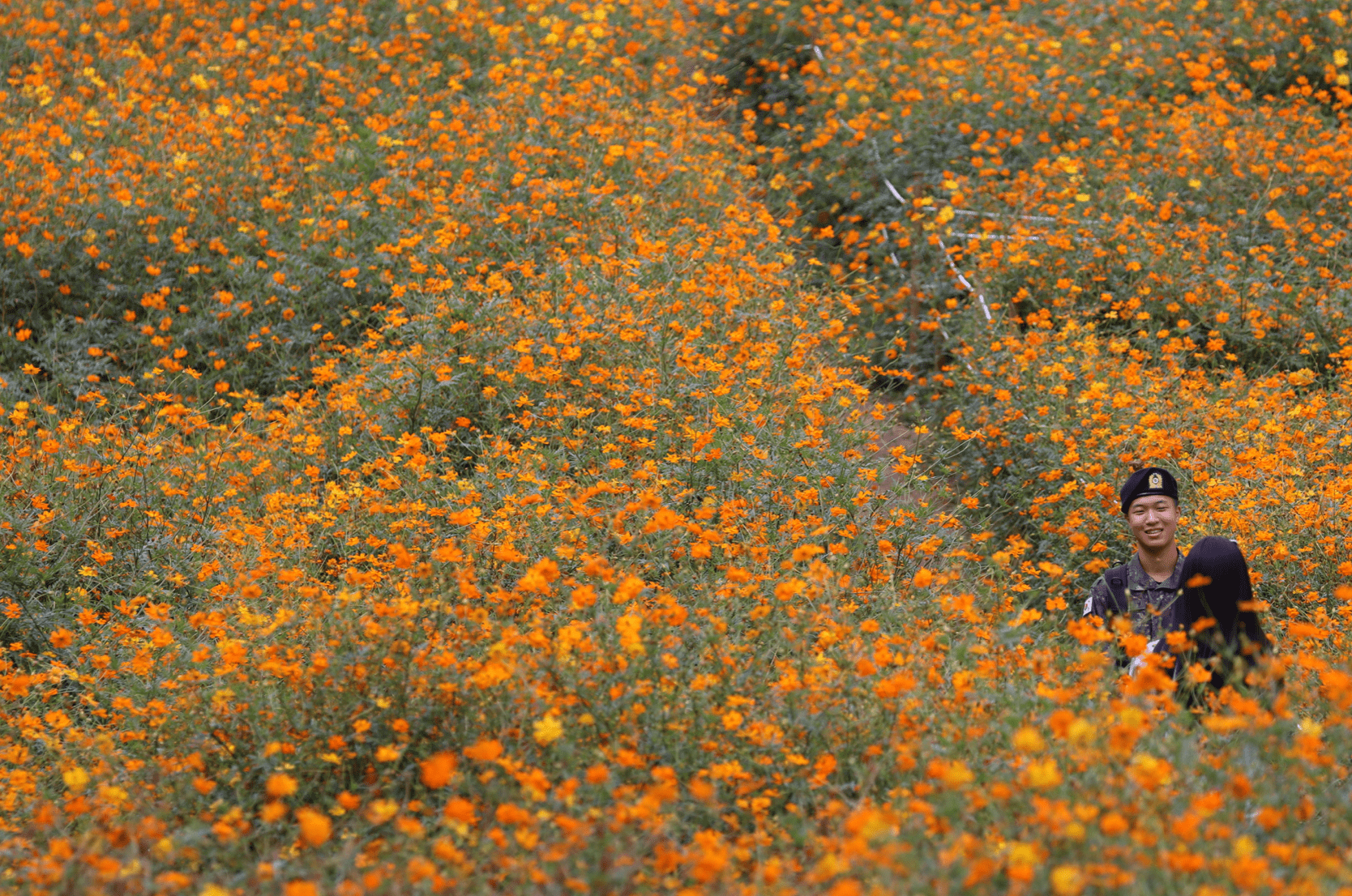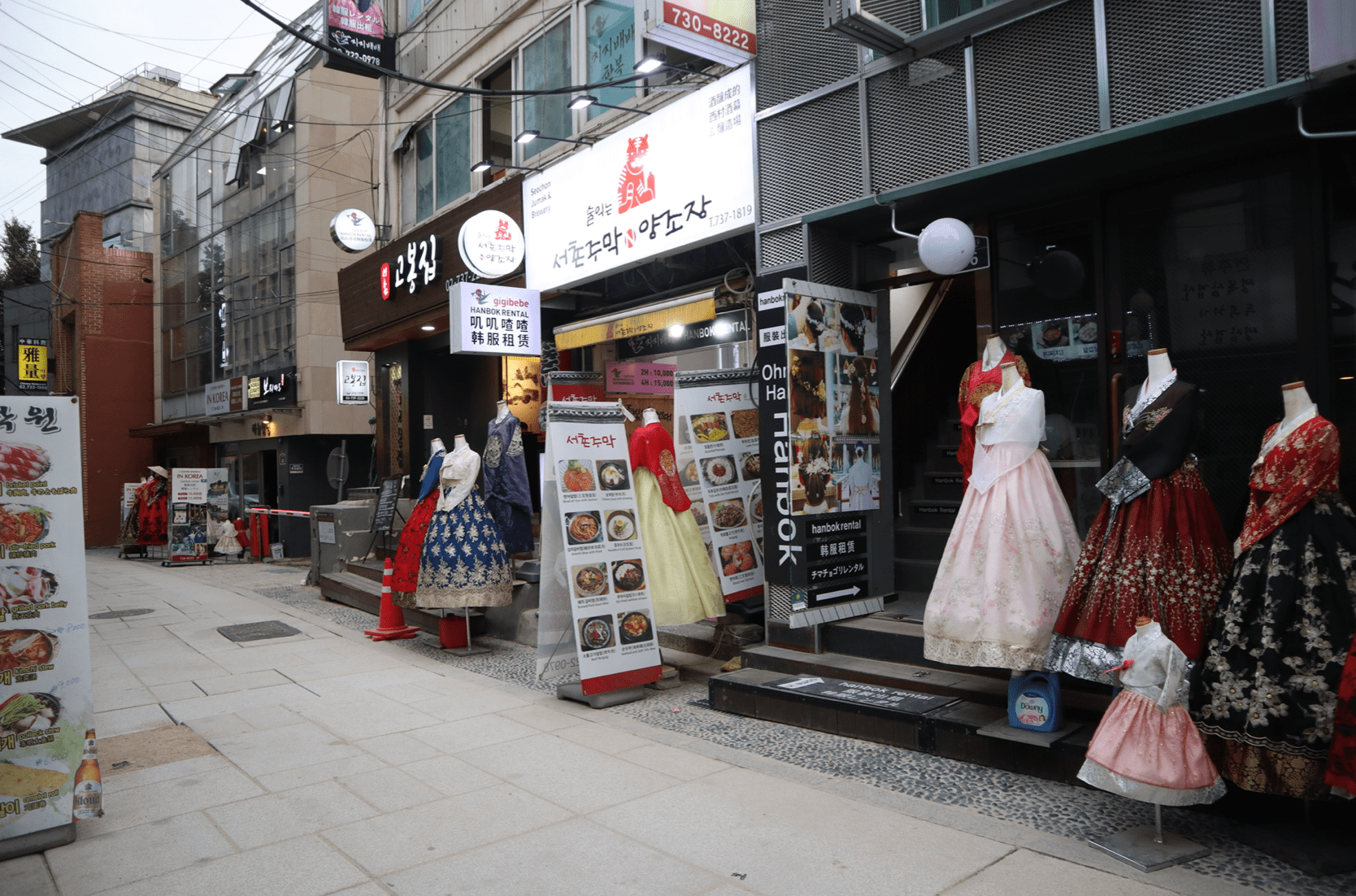Part 2 - South Korea as a Benchmark for Tourism Development
As promised, here is the part 2 of the article on how South Korea can be considered as a benchmark for tourism planning, development and management.
Some of the items included here may be a bit hard to swallow for some because they know for themselves that they have been doing the same or beyond what are listed here. Just the same, the intent of this article is to perhaps introduce one or two ideas that may have slipped the sharp minds of destination planners and managers. Who knows, this could enhance their discernment in considering how tourism in their areas could be appropriately developed.
If you missed the Part 1, you can read it HERE.
You only need a patch of land
This patch of land in Olympic Park is less than one hectare and yet,
this is one of the most visited features in the area.
Culture beyond its people and borders.
Encouraging visitors to wear traditional Korean clothing, with a simple incentive of free entrance to palace grounds have made many peoples or tourists further appreciate and embrace the country’s culture.
Which increased the number of business and locals benefiting from tourism
In many areas adopting this opportunity, it usually takes only one or two rentals to fully recover the cost of a traditional dress.
Beach Management is often a huge challenge
Every stakeholder knows that the value of the beach destination rests largely on the zero or non-damaging development of the beach area (Haeundae Beach in Busan)
Clear demarcations were established
Demarcation lines may be in the form of development that do not look and feel like the site is fenced, but can easily control any possible intrusion of unwanted development that would impact the dynamic beach area.
And maintain the quality of the beach
Public areas such as the open spaces of city halls are utilized for public events
This significantly increases the social value of the public spaces and provide venues that are not only for commercial purposes, but also to enhance the spirit of community of the citizens.
Open spaces are community spaces
Government units can develop a governance paradigm that are designed to make their people happy, contented and closer to them by providing open amenities and not denying the people access and enjoyment of spaces and amenities.
Lights significantly increase the value of destinations
There are numerous destinations in the country where setting up of lights and complementing them tasteful designs have helped established their areas as ideal places to visit.
Continuous improvement of destinations
Established destinations such as Seokchon Lake continue to be improved to provide “new” or enhanced feel of the attraction and keep their level of attractiveness.
Landmarks are Lighted
Landmarks that contribute to the quality of an area are kept lighted, thus avoiding to make the site “dead” or avoided by people. Unfortunately, in many sites (such as one fountain site in Metro Manila), there is more focus in keeping the feature turned off in order to save on utilities money without considering that such action results to the degradation of the destination, which on a macro scale, would mean loss of a much valuable potential tourism income for the city and its people.
Trail Lights are Provided
Tourist attractions that are kept open 24 hours to the public are kept safe with the provision of lighting. This is a social contract of the destination managers who should keep in mind that every person, whether a local or a visitor, should be protected while in their area.
Access thru Different Modes
Tourist destinations such as Haneul Park (the former dumpsite that has been repurposed into a tourist park) provide different modes to access the park after leaving their cars in the parking lots.
Scenic Steps
By implementing different modes of access, unwanted and stressful bunching of visitors like in a single access destination can be avoided.
Public Art is a Must
Every building of minimum specific size has a space for public art. A city need not be dominated by boring, squarish, and purely commercial designs that could eventually make an urban area “old and tired” after a few decades. Art has been the surviving feature of many historic cities and this trend can be maintained even in modern and future times.
Trails for every hiker
Majority of hiking sites in South Korea can be traversed even by senior citizens who benefit most to keep them physically healthy. Many of the hiking sites in the Philippines are biased towards the young and active age with the goal of camping on peaks and core sites. However, this highly limits the number of people who can access the sites. There are numerous climbing areas in the Philippines that can become “easily” accessible hiking sites instead and be available to a wider age range. Developed trails actually also protects the natural sites as impacts are controlled and prevent people from damaging natural vegetation.
Gyeongbukgung Palace
The most visited palace complex in Seoul is sometimes open at night. This provides a rare glimpse of the complex not only for tourists but largely for the local population to make them appreciate more their own culture and country.
Bukchon Hanok Village
Functioning cultural sights such a hanok (traditional Korean house) village can be visited even at odd hours provided that tourists observe silence and respect to the residents.
Cameras are ALLOWED
This is where the Philippines and perhaps other countries can learn a lot from South Korea. People who bring cameras are not negatively treated in both public and most private facilities. So long as they do not disturb other people or cause damage, most destination managers actually encourage people to take good quality photos of their sites without demanding anything from them. Beside, most tourists have high quality phone cameras that can rival bulky cameras. The excuse that photographers earn from their photos and thus subject to harassment is the opposite of the government helping their citizens to earn honest living. Seeing guards who go after people with cameras and harassing them is a very prehistoric and SMH scene.
There are so many lessons when one has the humility that he can still learn from the successes and realizations of other areas. Tourism is still an evolving industry and yet it has proven itself that it can be a huge, huge hammer in defining the way of development (or decline) of an area. Not only South Korea, there are still other countries and cities can provide realizations how new destinations can develop or perhaps be rebranded.
Without losing our way beating around the bush, here are some of the lessons we can learn:
Create your legacy
Everybody who is in the altar of power or policy making is in a great position to create a legacy that can last many generations. That legacy may come in the form of creating policies and standards how the local environment can be developed and protected at the same time. Would that be allowing structures to intrude towards the beach area and causing erosion? Or would it be setting up measures to keep the beach area clear of any unwanted structures thereby keeping its quality and attractiveness for many decades?
It’s the community
Unknown to many, the main reason why tourism should be developed is not to make the tourists benefit from the destination. The primary goal of the travel industry is to provide business and employment benefits to the locals.
A happy and financially contented community would not go out of their way inviting strangers who would demand many things from the hosts. Tourism oftentimes evolves due to the need to provide livelihood to the locals as the population and standard of living as well as demand for jobs increase.
However, tourism is a highly professional industry requiring high degree of product and service quality and the locals must subscribe to that reality. Their assured quality of tourist experience as regards their exposure to their target tourist attractions must be fulfilled and maintained which can be done if the attractions are protected and properly managed.
Go easy on development
Stakeholders in many emerging areas tend to become over-excited when they realize the commercial value of tourism. A good number would want to open up various attractions at the same time or even allow development that would damage the attraction. There must be careful planning and allowing only the most viable sites to be opened up at a time so development can go hand in hand with the growth of the travel market.
Go all out on open spaces
So many sites in the Philippines have lost the tourism potential of their public areas such as beaches and forests, pocket parks and rights of way because those sites were sold to private firms and individuals.
Open spaces have now started to provide the intrinsic or even up-front value of developed areas. Keep those open spaces for they could become not only the fresh part of an urban site, but they can also become a primary events place or social amenity that defines the quality of living or doing business in the area.
It’s INVESTMENT, not cost
For many people who can influence the development trajectory of their areas, it is unfortunate that the valuation of development is based on the cost or the value of money. In some cases, institutions are more proud on the money saved which could have been spent to ensure the improvement of their site and their people. Appropriate and sustainable tourism development must be regarded as an INVESTMENT to provide for the present generation and protect the future of their communities. Tourism must be seen on a macro scale wherein the sphere of economic influence goes beyond the peripheral fence of the attraction. An 800 square meter property that has become a major tourist attraction can influence the financial status of thousands of families and revenues of several government units.
Culture, History and Arts deserve their places higher than profits
In any city or county, much of their legacies are defined by the arts that often reflect their culture and history. There is always a finiteness in space. These things must never be relegated to the margins in order to give way to commercial development.
I do hope you appreciate this article. If not, I would like to think that you have become challenged to do something better for the site where you can have a role in tourism planning and development.
You can also read the article on Urban Mobility
Check out my online course on practical carrying capacity
as well as the ebook on Practical Ecotourism


















